Area of interest: North India, Central India, and South India.
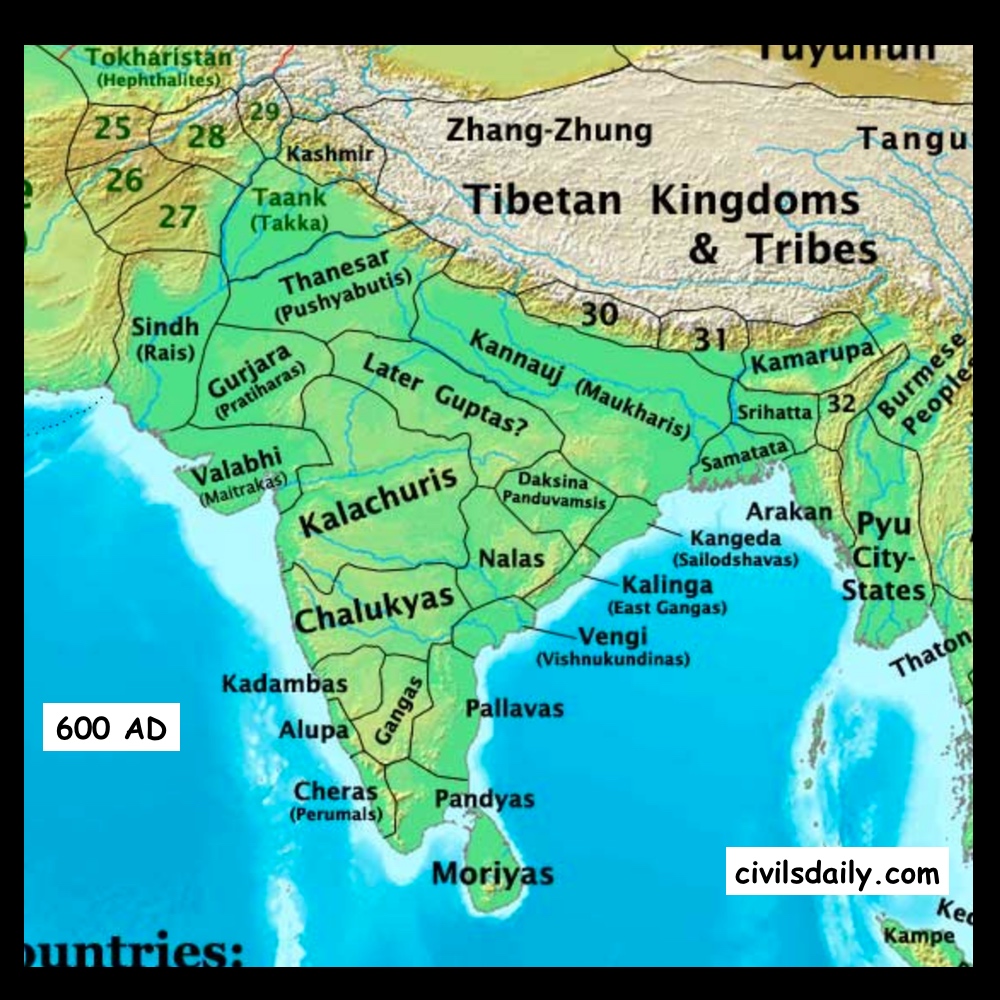
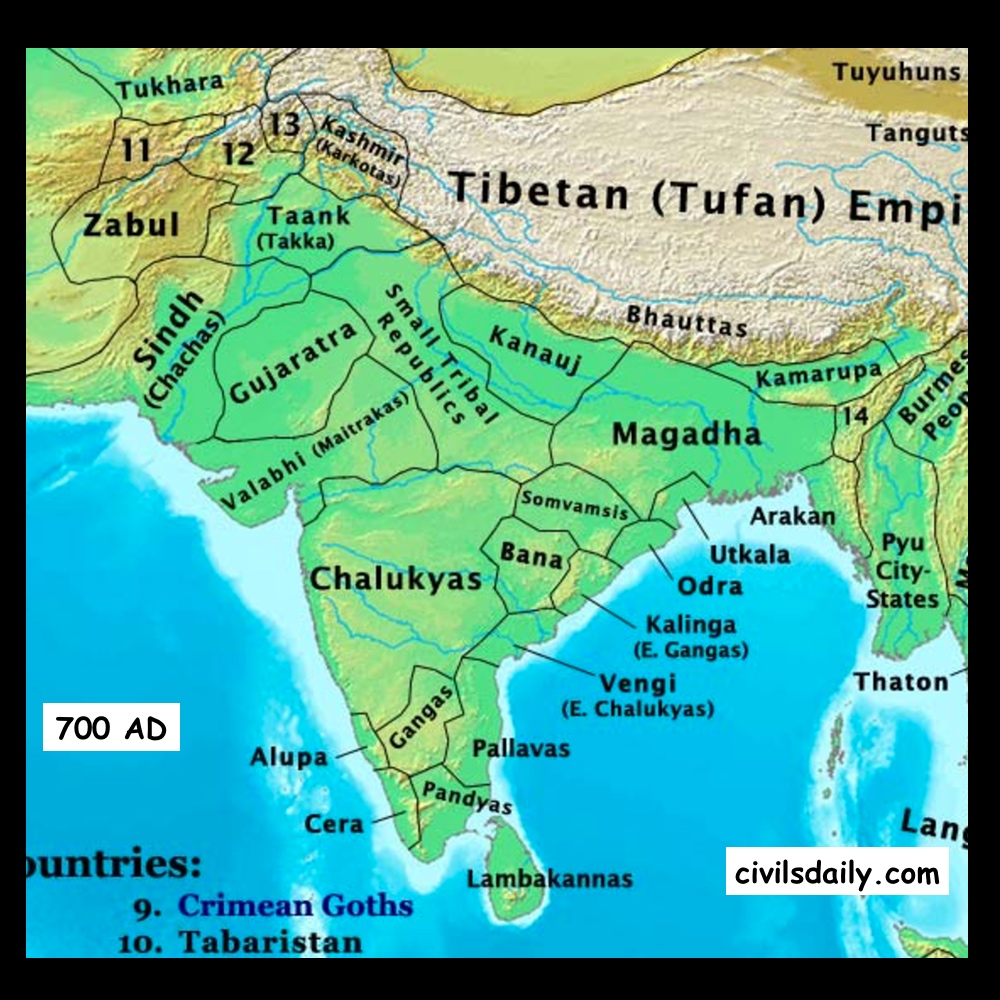
After the decline of Harsha’s empire, a number of large states rose in North India, Deccan, and South India. 3 of the most prominent among these were – the Palas, the Pratiharas, and the Rashtrakutas.
NORTH INDIA
The political confusion created by the fall of Harshavardhana was resolved with the rise of Gurjara-Pratiharas in Central India and Palas in the East.
I. Political Background
-The Pala empire founded by Gopala around 750 AD. They were majorly a power in Bihar but also ruled over Bengal.
-The Pratiharas ruled from Kanauj and often clashed with the Palas and the Rashtrakutas giving rise to what is known as the ‘tripartite struggle’.
II. Literature and Language
| Work | Author | Type | Theme | Patronage |
| Ramacharitam | Sandhyakaranandin | Sanskrit Epic poem | Complex composition as each verse offers two meanings. One related to Ramachandra of Ayodhya and the other about Pala ruler Ramapala | Pala Empire |
III. Religion
The changes introduced in the preceding era (300 AD – 600 AD) continued.
A. Hinduism
The popularity of Brahmanical bhakti cult increased. Vaishnavism and Saivism rose to popularity due to sustained patronage from dynasties.
B. Buddhism
Hiuen Tsang and Ijing’s accounts testify the decline of Buddhism. However, Buddhism flourished in Eastern India under the Pala and Sena dynasties. Nalanda University and few other universities continued to prosper under their patronage.
| Other Famous Buddhist Universities | Location |
| Vikramasila | Bihar |
| Odantapuri | Near Nalanda, Bihar |
| Somapuri | Paharpur, Bangladesh |
The above sites were centers of Mahayana Buddhism. With the turn of millennium, new elements to existing Mahayana practices were introduced, namely complex and esoteric Tantric ideas and practices. One major outcome was growing visibility of female deities, particularly Tara in diverse forms. This introduced complex rituals often oriented to sexual practices.
C. Jainism
Not much support was found in the North and Jainism was fading in the North.
IV. Architecture
A. Mahavira in Paharpur, Bengal(now Bangladesh)
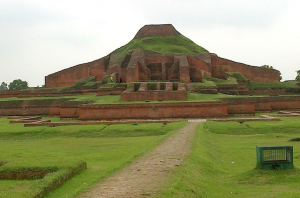
- Know for its crucifix (cross shaped) basement plan.
B. Mahabodhi Temple, Bodhgaya
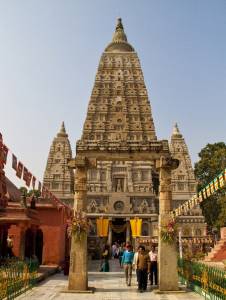
- The temple itself as it stands now is largely a Colonial Period reconstruction of the old 17th century design but many sculptures in the niches in the temple are dated to the 8th century Pala Period.
- The first shrine, located at the base of the Bodhi tree, is said to have been constructed by King Ashoka; the vedika around it is said to be post-Mauryan, of about 100 BCE;
- Known for its unusual design. It is, strictly speaking, neither Dravida nor Nagara – it is narrow like a Nagara temple, but it rises without curving, like a Dravida one.
C. Monasteries
- Vikramasila university was established by king Dharampal. Nalanda University was renovated. Most of these buildings have vanished.
- The monasteries were imposing rectangular buildings, each with an open courtyard, enclosed by a covered verandah which leads into cells, arranged on the four sides.
Nalanda University
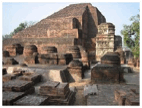
Vikramsila University
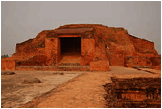
V. Art
A. Sculptures – Pala School of sculpture
- Derives its features from, both, the Sarnath and the Mathura schools
- Detailed sculptures but delicate ornamentation.
- Back-slabs are a unique feature of the sculptures.
- Has many sub-schools. 2 most important are Nalanda school and Bodhgaya School.
Nalanda School of sculpture
- Art from stucco, stone and metal(most specifically bronze).
- Synthesis between the Sarnath school from the Gupta period and the local bihar tradition.
Nalanda bronzes
- Remarkable bronze is a 4-armed avalokiteshwara which is a good eg. of male form in tribhanga
- Images of Tara became very popular. Growing curvilinear lotus stalk and her right hand in Abhaymudra.
Bodhgaya School of sculpture
- Has elements from the Matura school.
- Seated Buddha
- Standing image of Buddha broken off at mid thighs
- Elongated halo with the flame like motif around its perimeter.
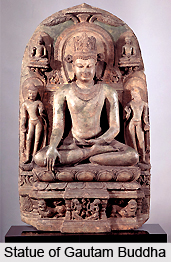
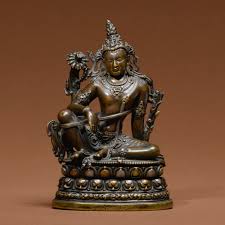
B. Paintings – Pala School of painting
- The earliest examples of miniature painting in India were executed under the Palas.
- These paintings are found in Bengal and Bihar region, mostly produced in the buddhist centers of learning like Nalanda, Vikramsila, etc.
- Were initially done on palm leaves while later we see a shift towards painting on
- Buddhism remained the chief subject. Besides Buddhism, few paintings were dedicated to Hinduism.
- Scenic paintings like that of banana and coconut trees are also seen prominently.
- The Pala painting is characterized by sinuous lines and subdued tones of color.
- It is a naturalistic style that resembles the ideal forms of contemporary bronze and stone sculpture and reflects some feeling of the classical art of Ajanta.
- The Pala art came to a sudden end after the destruction of the Buddhist monasteries at the hands of Muslim invaders in the first half of the 13th century.
- Ashtasahasrika-Prajnaparamita is a very popular manuscript. 5 leaves from the manuscript are shown below.
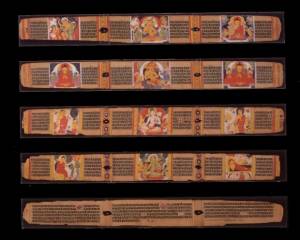
CENTRAL INDIA
I. Political Background
The Rashtrakutas dynasty was founded by Dantidurga in 754 AD with its capital in Malkhed, Maharastra. Their rule continued till the end of the 10th Century.
II. Literature and Language
This period saw the development of Kannada and Sanskrit. The trinity poets of this time – Pampa, Ranna, and Ponna made immense contributions to Kannada.
Literary contributions were few under the Rashtrakutas.
| Work | Author | Type | Theme | Patronage |
| Kavirajamarga | Amoghavarsha I | Poetic Works | Earliest work in Kannada | Rashtrakutas |
III. Religion
The Rashtrakutas were tolerant in religious views and patronized Saivism, Vaishnavism and Jainism. The revival of Hinduism that began during the Guptas got a boost.
Though Jainism did not spread outside India like Buddhism, but continued to exist in Western India and Karnataka.
Even Muslim traders were allowed to settle and Islam was preached. Unfortunately, Buddhism saw a decline.
IV. Architecture
The Rashtrakutas temples are majorly rock cut. Art and architecture at Ellora and Elephanta cave temples are remarkable contributions of the Rashtrakutas.
A. Cave Temples
The vesara style reached its culmination under the Rashtrakutas. Deccan architecture shows the hybridization of Nagara and Dravidian style ie. Vesara style. These
1. Ellora – Kailashnath temple
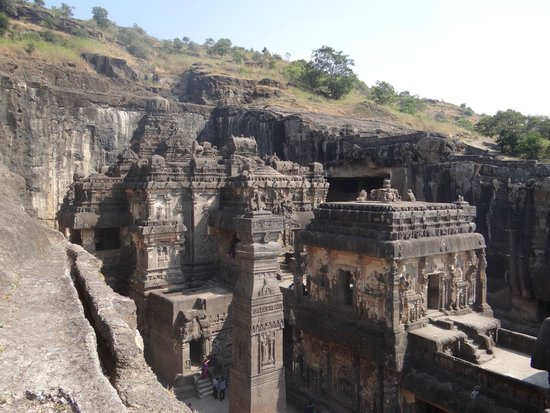
- Is located in Ellora, Maharashtra
- This temple is considered the greatest achievement in Rashtrakutan architecture built under the patronage of Krishna I.
- It is a rock-cut temple built in Dravidian style with a Nandi shrine.
- It is carved out of a monolithic rock.
- Some of these caves are dedicated to Buddhism.
2. Elephanta Caves
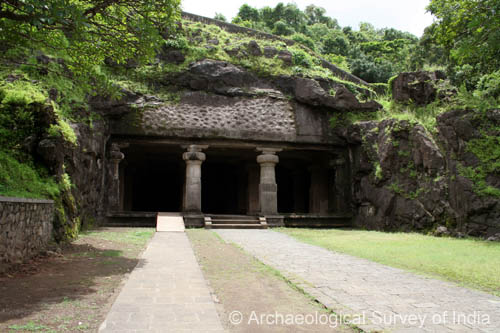
- are a network of sculpted caves located on Elephanta Islands in Mumbai Harbour.
- It has Hindu and Buddhist caves
- The Hindu caves are dedicated to Lord Shiva.
- The rock cut architecture of the caves has been dated to between the 5th and 8th centuries.
- Designated as a UNESCO World Heritage Site.
V. Art
A. Ellora Caves
1. Shiva and Parvati’s Wedding
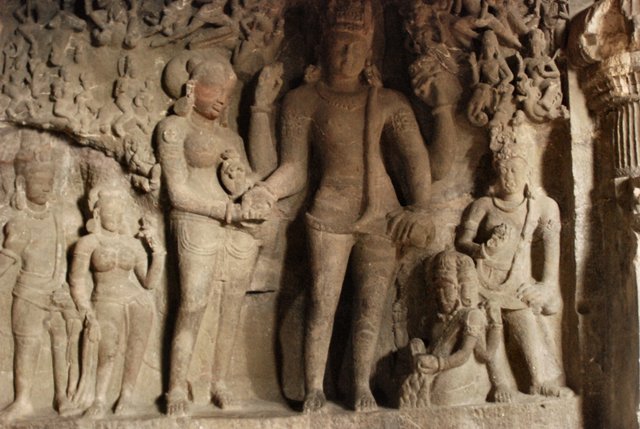
2. Ravana shaking the Kailash mountain
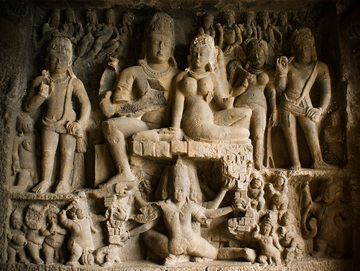
3. The Dashavatara Cave – illustrate ten incarnations of Vishnu. One being Vishnu rescuing Bhoodevi.
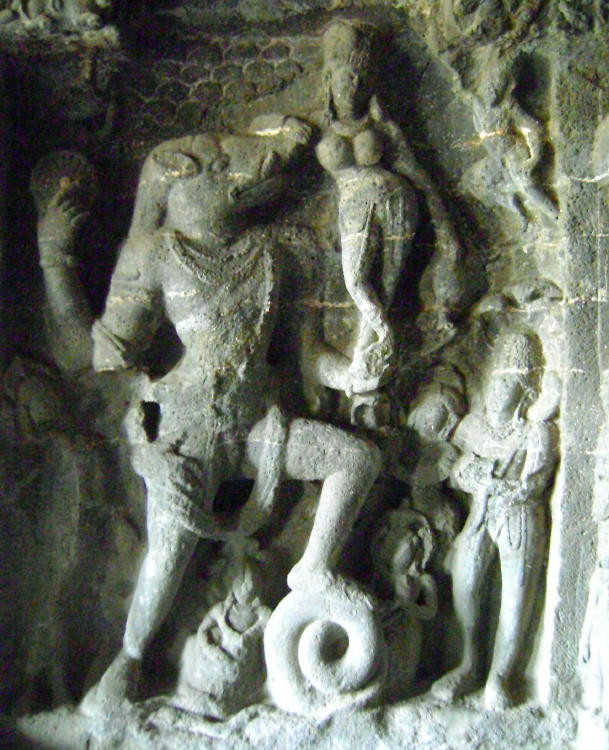
Other than these, Ramayana theme is well depicted in this temple.
B. Elephanta Cave Scultpures
1. Trimurti
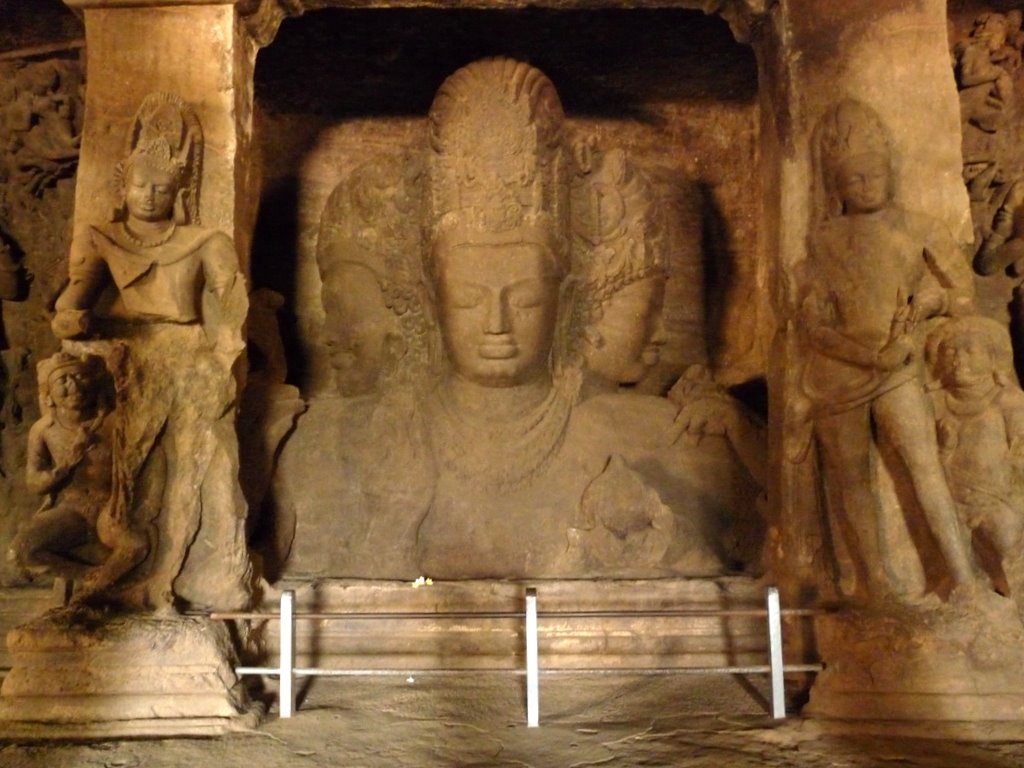
- The three heads are said to represent three essential aspects of Shiva: creation, protection, and destruction
2. Gangadhara panel
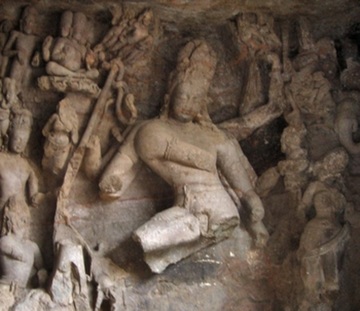
- Shiva as Nataraj performing the Tandava (cosmic dance).
3. Gangadhara Panel
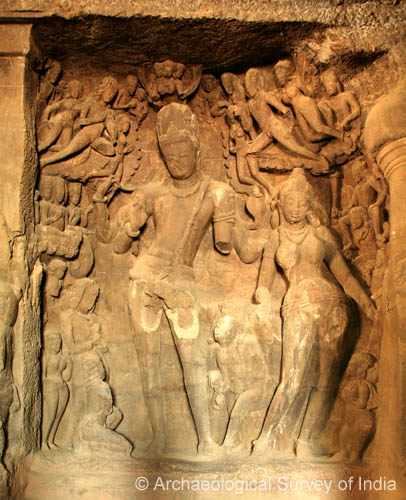
4. Ardhanarishvara Panel
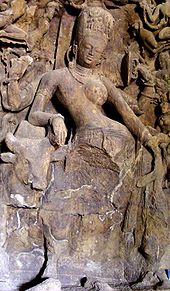
Other than the above, Wedding of Shiva, Shiva slaying Andhaka and Yogisvara are other important scultures.
SOUTH INDIA
South India witnessed the weakening of the mighty Pallavas giving way to the imperial Chola Empire. Few significant works of art and architecture are as follows
Bahubali
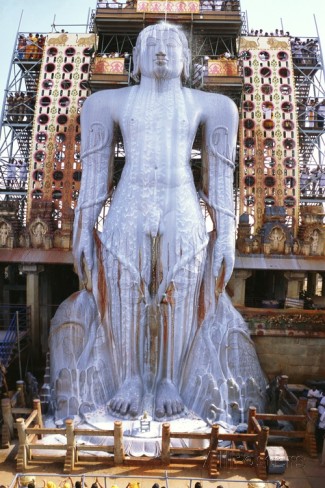
- Bahubali , a much revered figure among Jains was the son of Rishabanath, first Jain tirthankara.
- He is said to have meditated motionless for one year in a standing posture (Kayotsarga) and that during this time, climbing plants grew around his legs.
- After his year of meditation, Bahubali attained omniscience (Kevala Jnana).
- According to Jain texts, Bahubali’s soul was liberated from the cycle of births and deaths (moksha) at Mount Kailsh.
- Bahubali is also called Gommatesha because of the Gommateshwara monolithic statue dedicated to him.
- The statue was built under Ganga dynasty in Sravanabeligola in Karnataka around 981 AD.
- It is one of the largest free-standing statues in the world
References and image credits

